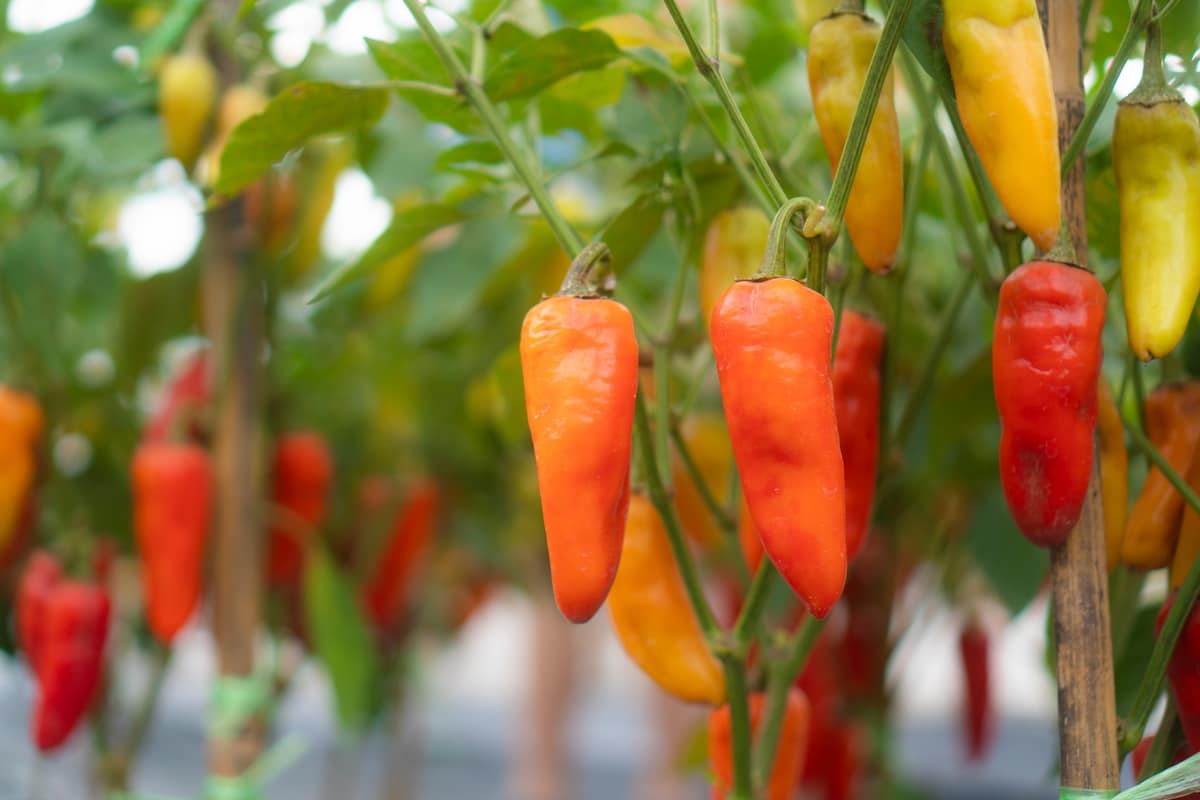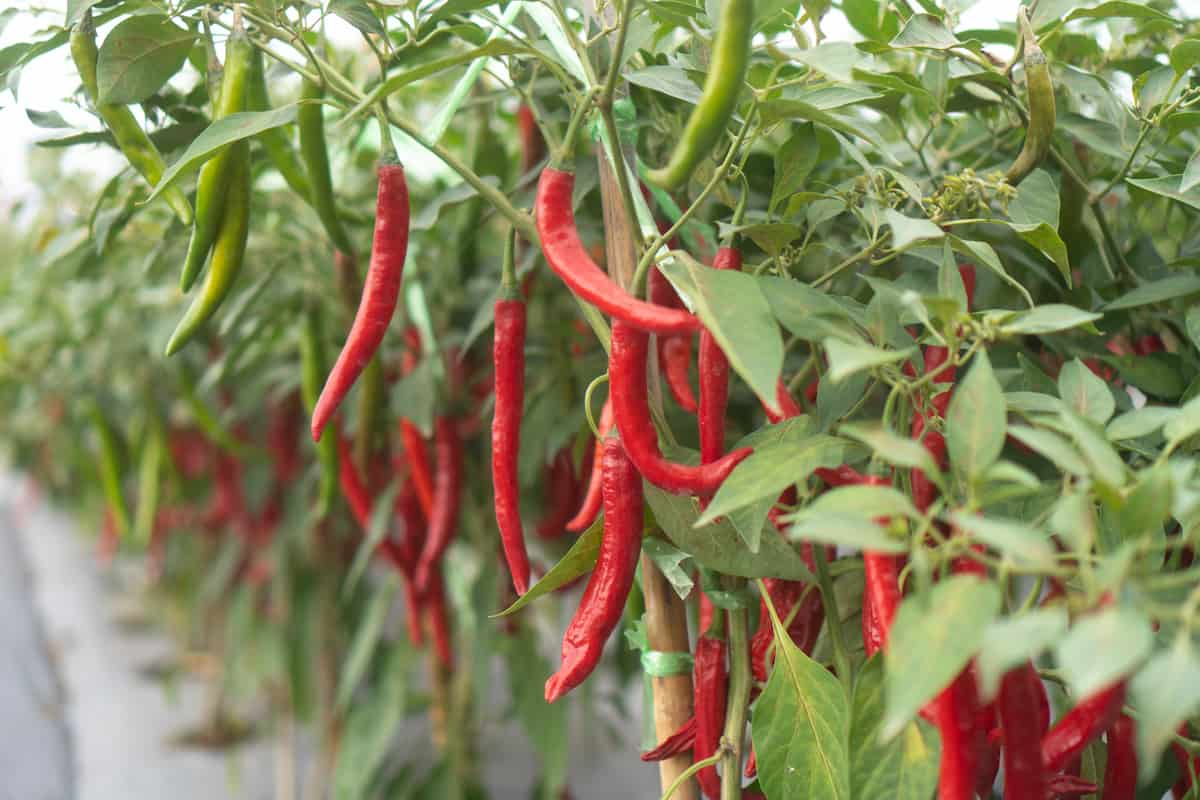Chili pepper farming can be profitable in California, given the state’s climate and fertile soil. Anyone can start a successful Chili pepper farming business with the right care and procedures. This article will discuss the steps and procedures needed to start a Chili pepper farm in California.

How to Start Chili Pepper Farming in California
Right Location
The first step in starting a Chili pepper farm is to choose the right location. California has diverse climates, and the type of Chili pepper you choose to grow will depend on your location. Generally, Chili peppers require warm temperatures and plenty of sunlight to thrive. Therefore, you should choose a location that receives at least six hours of sunlight daily, has well-drained soil, and is protected from strong winds.
Right Variety
The next step is to select the right variety of Chili pepper to grow. There are many different Chili peppers, each with a unique flavor and heat level. Some popular Chili pepper varieties grown in California include Anaheim, Jalapeño, and Serrano. Consider market demand, disease resistance, and yield when selecting the Chili pepper variety to grow.
Land Preparation
Preparing the land is a crucial step in Chili pepper farming. Chili peppers require well-drained, fertile soil that is rich in organic matter. The soil should be tilled to a depth of at least six inches to allow for good root development. You should also conduct a soil test to determine the nutrient levels and pH of the soil. Based on the test results, you may need to add fertilizers or adjust the pH level to optimize soil conditions for Chili pepper growth.
Planting
After preparing the soil, it’s time to plant the Chili pepper seeds or seedlings. If planting seeds, they should be planted one inch deep and spaced at least six inches apart. If planting seedlings, they should be planted at least twelve inches apart. Water the plants immediately after planting to help them establish roots.
Irrigation
Chili peppers require regular irrigation to thrive. The plants should be watered deeply once a week or more frequently if the soil is dry. However, overwatering can lead to root rot, so be careful not to water the plants excessively. Drip irrigation is a popular method for irrigating Chili peppers, as it delivers water directly to the roots while minimizing water wastage.
Fertilization
Chili peppers require regular fertilization to promote growth and yield. Growing Chili peppers thrives with a well-balanced fertilizer with equal nitrogen, phosphorus, and potassium. You can also use organic fertilizers such as compost, manure, or bone meal. To enrich the soil. Fertilize the plants every four to six weeks during the growing season.
Pest and Disease Control
Pests and diseases can pose a significant threat to Chili pepper farming. Common pests that attack Chili pepper plants include aphids, mites, and whiteflies. Diseases like bacterial spots, powdery mildew, and blossom end rot can also affect Chili pepper plants. To prevent pests and diseases, practice good crop rotation, maintain good hygiene, and monitor the plants regularly for any signs of infestation. You can also use organic or chemical pesticides to control pests.
In case you missed it: How to Grow Yellow Muskmelon from Seed: A Step-By-Step Guide

Harvesting
Chili peppers are usually ready for harvest 60 to 90 days after planting. The peppers should be harvested when fully ripe and have developed their characteristic color. The peppers may be removed off the plant with the use of a sharp knife or pruning shears; just be careful not to damage the plant or any of the other fruit while doing so. Harvest the Chili peppers regularly to encourage continued production throughout the growing season.
Marketing
Marketing your Chili peppers is an essential step in the farming process. You can sell your Chili peppers directly to consumers at farmers’ markets or through online platforms. You can also sell to local restaurants, grocery stores, and food manufacturers. Creating a brand and developing a marketing strategy to increase sales and promote your farm’s unique selling points is essential.
In case you missed it: Seedless Watermelon Farming: A Step-By-Step Guide for Seed to Harvest

Conclusion
Given the right care and procedures, chili pepper farming can be profitable in California. Selecting the right location and variety, preparing the soil, planting, irrigation, fertilization, pest and disease control, harvesting, and marketing are all critical steps in starting a successful Chili pepper farming business. With hard work, dedication, and proper care, you can grow high-quality Chili peppers and establish a thriving business.
- Feed Your Flock for Less: Top 10 Tips to Save on Chicken Feed
- Ultimate Guide to Ossabaw Island Hog: Breeding, Raising, Diet, and Care
- Hatching Answers: The Top 10 Reasons Your Chickens Aren’t Laying Eggs
- Eggs and Economics: Breaking Down the Cost of Raising Backyard Chickens
- Defend Your Greens: Proven Methods to Keep Iguanas Out of Your Garden
- Ultimate Guide to Cinnamon Queen Chicken: A Comprehensive Guide for Beginners
- Ultimate Guide to California Tan Chicken: Breeding, Raising, Diet, Egg-Production and Care
- Ultimate Guide to Marsh Daisy Chicken: Breeding, Raising, Diet, and Care
- 10 Types of Chicken Farming Businesses You Can Start for Profits